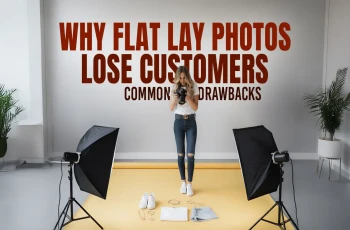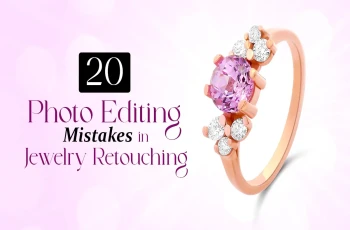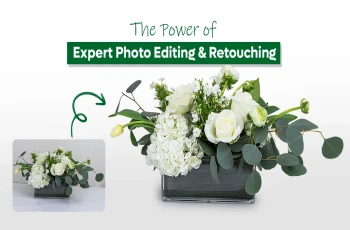
Amazing Diamond Jewelry Retouching Techniques to Boost Sales in 2025

Read | Loved by: 7211
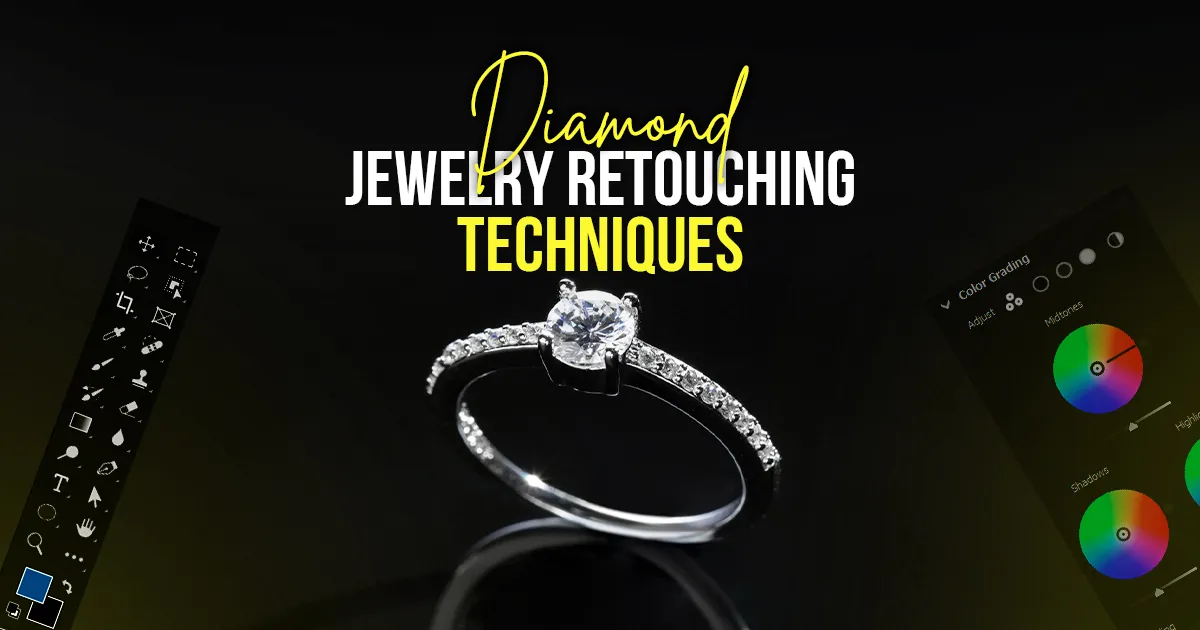
There it is - maybe you've just completed taking 87 photos of your most precious engagement ring. And now you got the real twist when you found that whereas the diamond should look like it’s whispering “forever,” but instead, the images are like your blue diamond jewelry has just rolled out of bed. Pathetic, isn't it?
The shadows in the setting? Plotting against you. The sparkle? Gone missing like your last gym motivation. And now you’re almost one shot away from tossing your camera into the nearest trash can, maybe?
Before anything, here’s the mic-drop moment for you - retouching diamond jewelry sells 3x faster, and no, you don’t need magic spells or a Hollywood budget to pull it off! All you have to do is acknowledge the suitable retouching techniques for your pic of real diamonds, and that’s why this blog is here to remove all your confusion and help you make the best decision with your jewelry. So, without further delay, let’s start our diamond jewelry retouching techniques guide and starting with the basic one -
What is Diamond Jewelry Retouching?
Photo retouching is mainly correcting as well as improving some basic as well as sensitive details of any product, and when it's about retouching diamond jewelry, the overall brightening, maintaining the real tone, and making it more appealing can be referred to as the most suitable diamond jewelry retouching technique.
Basically, diamond jewelry retouching techniques are about enhancing the reality of the product in the photos. Besides, businesses need to invest in this because 6 out of 10 buyers decide if jewelry is good based on photos, and great retouching can turn your customers from “Is that real?” into “I need this now! So now, as you know the definition, let’s know about -
The Importance of Real Diamond Jewelry Retouching
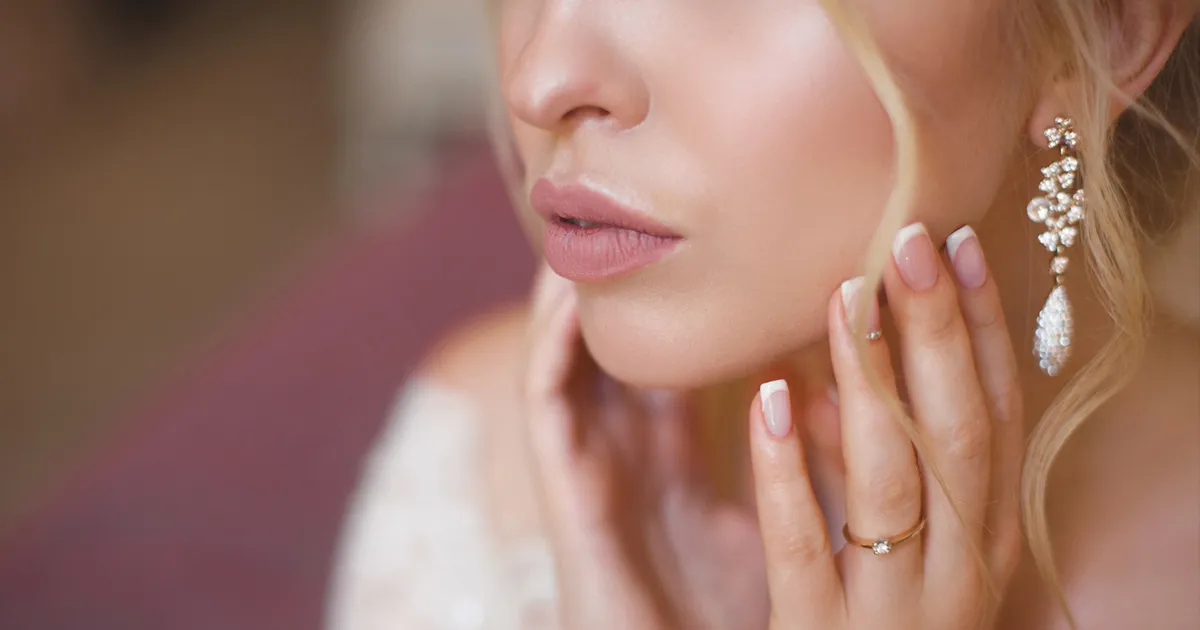
Have you ever thought about why some jewelry photos make you stop mid-scroll while others get a swipe-left? The secret isn’t just fancy lighting—it’s mainly the magic of perfect diamond jewelry retouching techniques. So here’s why it can be a game-changer for your sales and brand:
- Attracts More Buyers: High-quality retouched images grab attention instantly. 60% of buyers judge jewelry quality through photos, and polished shots make pieces look premium, boosting clicks and sales.
- Highlights Craftsmanship: Retouching diamond jewelry sharpens intricate details like engravings, prongs, and gemstone facets, showcasing each piece.
- Eliminates Distractions: Use techniques like spot healing and cloning to make dust, scratches, and fingerprints disappear, guaranteeing a faultless presentation.
- Verifies True Color: By adjusting the white balance and color correction, you may make gemstones appear more realistic, without any artificially inflated hues.
- Adds Professional Sparkle: Retouching diamond jewelry photos enhances reflections and shine, making diamonds glow like they’re "lit from within".
- Creates Consistency: Uniform lighting and jewelry photo editing services across all images build brand trust and a cohesive product lineup.
- Saves Costs: Fixing photos digitally is cheaper than reshoots, especially for delicate pieces that are hard to photograph.
- Boosts Online Credibility: Crisp, retouched images signal professionalism, convincing buyers your diamond jewelry is worth the price.
The Importance of Real Diamond Jewelry Retouching
In a world where a large number of online shoppers decide in seconds, certainly mediocre jewelry photos are a missed opportunity nowadays. Retouching doesn’t just fix flaws in the images, but rather it crafts images that tell a story of luxury, precision, and craftsmanship in detail.
So now let’s find out how to level up your diamond jewelry photography work from "seen" to saved, through the following diamond jewelry retouching techniques -
Get the Photo Ready Properly
First things first, take clear, bright photos with perfect lighting, and it is essential to avoid any kind of shadows or reflections. It’s better to place the jewelry on a plain white or soft colored background to make editing easier and produce rich-looking visuals easily.
On a very important note, as diamond jewelry retouching techniques, make sure that the colors on your diamond jewelry look natural by setting the right white balance on camera. This way, your retouching process will be easy enough to complete in top-notch quality.
Clean Up the Image
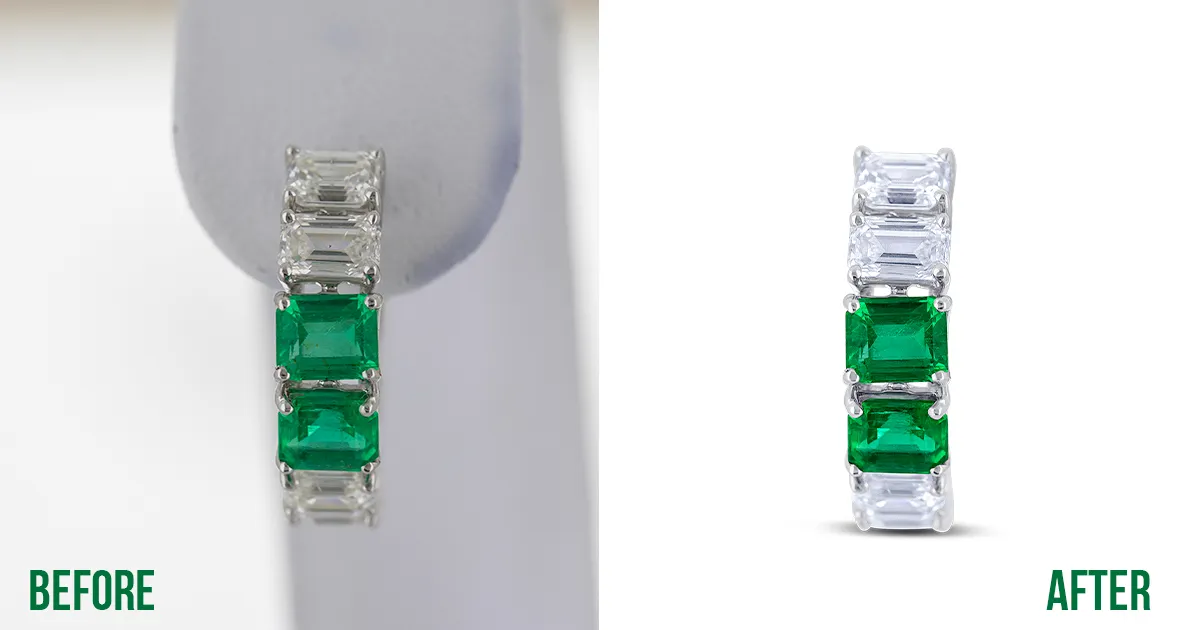
Now that your diamond jewelry photo is free of distracting imperfections, it’s time to bring out its hidden brightness. You can use tools like frequency separation to sharpen facets without overexposing highlights, and dodge/burn layers to amplify natural reflections.
Next, you’ve to adjust color balance to ensure present metals look true to life, and fine-tune contrast to make every facet pop. This stage ultimately transforms your diamond jewelry photos from "clean" into captivating.
Make Diamonds and Gems Shine
Now you are in the part of brightening and boosting the contrast of your diamond jewelry images to define each facet’s sharp edges and amplify natural sparkle. Add depth with targeted highlights and shadows using dodge/burn tools, mimicking how light dances across 3D surfaces to create a glow that feels alive.
Then, refine reflections by replacing dull glares with crisp, angled shines that scream luxury without any doubt. These steps of retouching diamond jewelry ultimately ensure holding hostage by balancing light, color, and reflection tricks to the brain into seeing real-world brilliance, making gems irresistible to buyers.
Make Metal Look Polished
Now this your turn to smooth out scratches and smudges on metal surfaces using clone stamp or healing tools, ensuring bands and settings look factory-fresh. Remember to adjust color balance to match the true metal type, for instance, no rose gold masquerading as platinum just by tweaking temperature/tint sliders.
For premium finishes like any jewelry retouching service, utilize rhodium plating or brushed gold, add targeted highlights with overlay layers or subtle texture overlays to mimic real-world luster. These simple modifications turn dull metals into mirrors, reflecting craftsmanship that buyers can feel through the screen.
Fix Colors and Balance Light
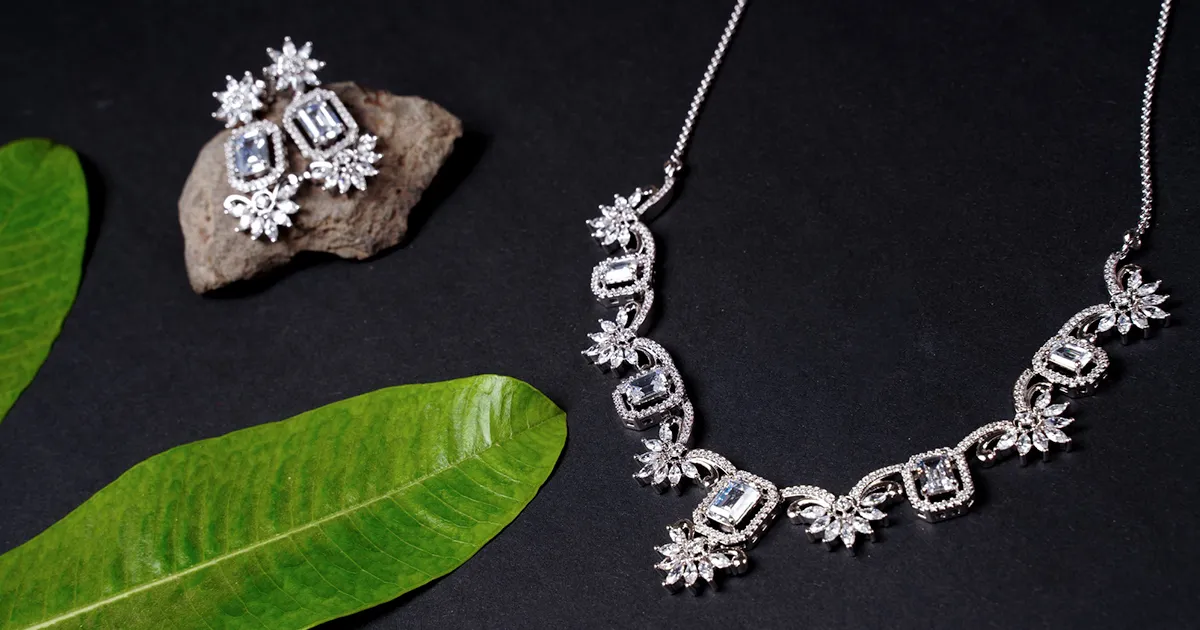
This step starts by adjusting white balance to neutralize unwanted tints that you can find in the raw images. Utilize color correction layers (hue/saturation, curves) to fine-tune gemstone hues and metal tones, ensuring diamonds stay fiery as well as icy after that.
For brightness, balance highlights and shadows with adjustment layers as these can ultimately lift midtones to reveal hidden details in dark crevices, and tame overexposed areas to prevent "washed-out" gems.
Next up, masking specific zones (like prongs or chains) to edit them independently, preserving natural gradients while enhancing depth. The end goal? Images that look consistent across devices and scream, "this is exactly what you’ll get."
Sharpen Details and Final Fixes
Now it’s time to zoom in and perfect the tiny details that separate "good" from gallery-quality. Here, you’ve to use frequency separation to sharpen intricate engravings and prong edges without overexposing highlights, preserving the jewelry’s delicate textures.
Tackle stray reflections or uneven shadows with targeted cloning or healing brushes, ensuring every angle looks intentional. Additionally, fine-tune global sharpness (try Unsharp Mask at 20-30% opacity) to make facets pop, but avoid overdoing it—gritty edges scream "overedited."
Finally, review the image at 100% zoom to catch dust or color spills missed earlier, and use vibrance adjustments to subtly amplify gemstone saturation without distorting hues. This stage polishes your diamond jewelry retouching work into a flawless, sell-ready masterpiece.
Get Feedback and Practice
Even the most polished retouching diamond jewelry skills need a reality check. So it's better to share your retouched images with peers or clients to spot overlooked flaws (like lingering reflections or uneven sharpening) and gather fresh perspectives.
Practice on diverse jewelry types rather than only diamond jewelry to master textures and lighting quirks. You can even use before-and-after comparisons to track progress and revisit older edits to apply new techniques.
Remember that consistency breeds expertise, so don’t forget to shoot and retouch daily to build muscle memory for color balancing and detail work.
SEO Optimization for Diamond Jewelry Images
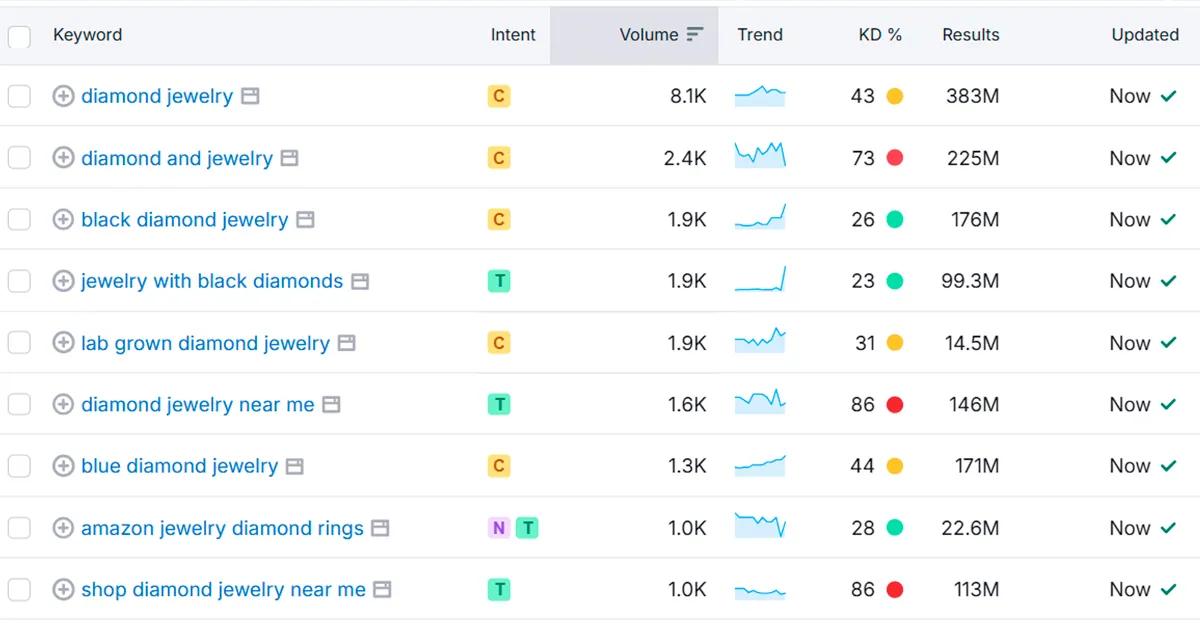
Believe it or not, your dazzling retouching techniques won’t sell if search engines can’t see them. Name files descriptively (e.g., “14k-rose-gold-diamond-ring-closeup.jpg”) and compress images (under 200KB) to speed up page loading.
Use alt text as well, such as "Handcrafted cushion-cut diamond engagement ring with platinum band," to assist Google and visually challenged consumers. Above all, allow structured data to show up on Google's shopping carousel and organically include keywords in product descriptions, such as "lab-grown diamond earrings for weddings."
Pro tip: Leverage Pinterest with keyword-rich pins linking to product pages, as it’s just a goldmine for visual searches.
Must Follow Diamond Jewelry Product Photography Techniques
Ensure your diamond jewelry photographs capture the brilliance and craftsmanship of each piece with these professional yet approachable diamond jewelry retouching techniques:
- Give Cleaning First Priority: Dust, fingerprints, or smudges on jewelry can dull its gloss. Before shooting, polish every surface with a microfiber cloth and mild cleaning agents. For instance, a jeweler once captured photographs of a sapphire ring without cleaning that needed hours of editing to eliminate obvious flaws.
- Master Lighting Skill: Diffused soft lighting accentuates a diamond's intrinsic fire and reduces strong shadows. Create equal lighting using softboxes or LED panels. Position a reflector to bounce light into the facets of the gem for even more brightness.
- Choose Backgrounds Carefully: To highlight the real diamond jewelry, choose neutral, white, black, or muted tones for your background. Textured textures like marble or velvet give editorial shots refinement. For a contemporary, understated style, a customer raised engagement by matching diamond earrings with a frosted acrylic sheet.
- Showcase Scale and Proportion: Include subtle props like a watch or stacked rings to indicate size without distraction. Avoid overly bold elements that compete with the jewelry. A brand once used a brightly colored scarf as a prop—customers focused on the fabric, not the gemstone.
- Capture Multiple Angles: Photograph from 45-degree angles (to highlight depth) and top-down views to highlight minute elements and demonstrate symmetry. Most of the time, the real diamond jewelry seemed to "float" from a slanted view of a solitaire ring, therefore increasing its apparent worth.
- Leverage Lifestyle Context: Stage the jewelry in relatable scenarios, such as a hand holding a coffee cup or a necklace on a draped fabric, to evoke emotional connections. A brand’s campaign featuring a wedding bouquet beside a black diamond jewelry generated a 15% increase in inquiries.
- Optimize for Digital Platforms: Compress images to under 200KB for faster loading and include descriptive alt text (e.g., “14K rose gold diamond pendant jewelry with pavé band”). Try to use Pinterest-friendly pins with keywords like “luxury engagement rings” to drive traffic.
- Test Across Devices: One of the most crucial diamond jewelry retouching techniques to make it more preferable for clients. So, preview images on mobile screens and desktop monitors to ensure clarity and color consistency.
- Seek Professional Feedback: Collaborate with peers or clients to refine compositions and retouching techniques. Once, a jeweler improved their product images by incorporating feedback from a luxury stylist, resulting in higher conversion rates in their jewelry with black diamonds.
Final Thought
Great photography starts your own story, and retouching finishes it perfectly. So now that you know how to take preparation, shoot, and edit with suitable features as well as tools for your real diamond jewelry. But why stop there when you can get everything in one place with just one click?
In Color Clipping, our retouching team sharpens every facet, balances every hue, and polishes every pixel so your gems sell themselves in the best possible way to ensure that your jewelry looks so real, buyers will reach through the screen.
So, are you ready to outshine the competition with our jewelry retouching services with the best diamond jewelry retouching techniques? Contact us today!
FAQ

Maxilin Catherine Gomes
Meet Maxilin, a digital marketing enthusiast with a passion for storytelling and turning ideas into stories that connect brands and people. Expect fresh insights, industry wins, and a dash of creativity from the areas of marketing, photography, retouching
Categories
Tag Cloud
Latest Stories

